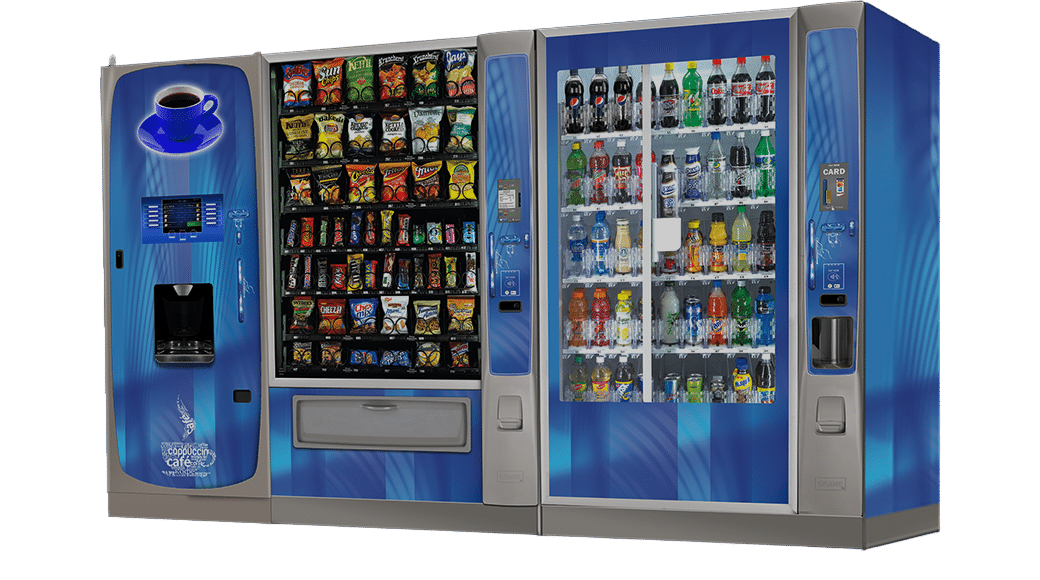Ensuring that American kids have access to nutritious meals is an ongoing effort involving various organizations working together to meet the needs of students in schools and other institutions nationwide. According to data from December 2021, an average of 15 million children in the U.S. received meals at schools and other locations daily. This significant statistic highlights the dedication of schools and individuals striving to fulfill nutritional requirements, a fundamental aspect for supporting overall socioemotional health and well-being.
Considering the changing requirements and commitment to a strong nutritional program, how can the inclusion of healthy vending machines in schools contribute to the efforts in your own district? In the following sections, we will explore the advantages of introducing vending machines to different types of schools or educational settings.
USDA Guidelines for Vending Machines in Houston Schools
Believe it or not, there are specific guidelines determining what can be placed in vending machines to ensure they meet the dietary standards set by the USDA. So, what exactly are these USDA guidelines for vending machines in schools?
Let’s break it down:
Beverages:
- At least 50% of beverages in each vending machine or micro-market must be healthy options.
- Plain or zero-calorie carbonated water must be available in each beverage vending machine.
- Acceptable options include plain or carbonated water (any size), unflavored 1% milk (up to 12 fl oz), unflavored or flavored non-fat milk and milk alternatives (up to 12 fl oz), 100% fruit juice with no added sweeteners (up to 12 fl oz), and low-calorie beverages with no more than 60 calories per container (up to 12 fl oz) or no-calorie beverages with no more than 10 calories per container (up to 20 fl oz).
Snacks:
- At least 50% of snacks in each vending machine must be healthy options.
- All snacks must be free of artificial trans fat, and refrigerated vending machines must include at least four fruit snacks without added fat, sugar, or salt, and at least two vegetable snacks without added fat, sugar, or salt.
- To qualify as a healthy snack, it must meet specific criteria, such as being a grain product with 50% or more whole grains by weight, having a fruit, vegetable, dairy product, or protein food as the first ingredient, or being a combination food with at least ¼ cup of fruit and/or vegetable.
- Healthy snacks must also meet nutrient guidelines for calories, sodium, sugar, and fats.
Meals:
- At least 50% of meal items in each vending machine must be healthy options.
- All meal items must be free of artificial trans fat, and refrigerated vending machines must include at least two items with a vegetable or fruit listed as the first ingredient and two whole grain-rich items.
- To qualify as a healthy meal item, it must meet specific criteria for calories, sugar, sodium, and fats.
These guidelines are essential to promote healthier choices and better nutrition for students across the country.
How are Vending Machines Beneficial for Schools in Harris County?
Providing healthy vending machine choices for students, faculty, and staff ensures access to the right nutrition during busy school days and events. With time and offerings limited for breakfast and lunch, having additional snack and beverage options complements the existing setup. Vending machines offer a straightforward way to enhance healthy choices without the need for staff management, aligning with the priority of health and wellness in the school environment.
The benefits of incorporating healthy vending machines in schools encompass:
- Convenient access
- Low maintenance
- Meeting nutritional standards
- Fostering student independence
- Potential for curriculum-based activities (such as exploring trends, probability, and statistics)
- Keeping students on campus
- Encouraging hydration
Should Vending Machines that Provide Healthy Options be Allowed in Schools?
When it comes to deciding what’s allowed in schools, each district has its own unique set of standards and regulations tailored to administration and state guidelines. The discussion around vending machines has evolved beyond a simple yes/no decision to a more complex consideration. Now, schools contemplate not only whether to have vending machines but also delve into specifics like the type of machines, featured items, location, administrative access, and selecting a vending distributor and why.
As a company specializing in vending machine solutions, our perspective naturally leans towards supporting the inclusion of vending machines in schools. We’ve collaborated with numerous districts to provide customized vending solutions. However, what works for your school or district may differ from others. A study in the Journal of Medicine & Science in Sports & Exercise highlights that even mild dehydration can adversely affect cognitive performance, particularly in tasks related to attention span, executive function, decision-making, and motor coordination.
What does this mean for school and extracurricular activities? It underscores the importance of hydration for kids. Conversely, addressing hunger during the school day might require exploring non-traditional food options beyond the cafeteria. Vending machines with healthy snack and meal alternatives offer a convenient, reliable, and relatively affordable solution for students (and adults) seeking quick nourishment to complement their breakfast and lunch options.

